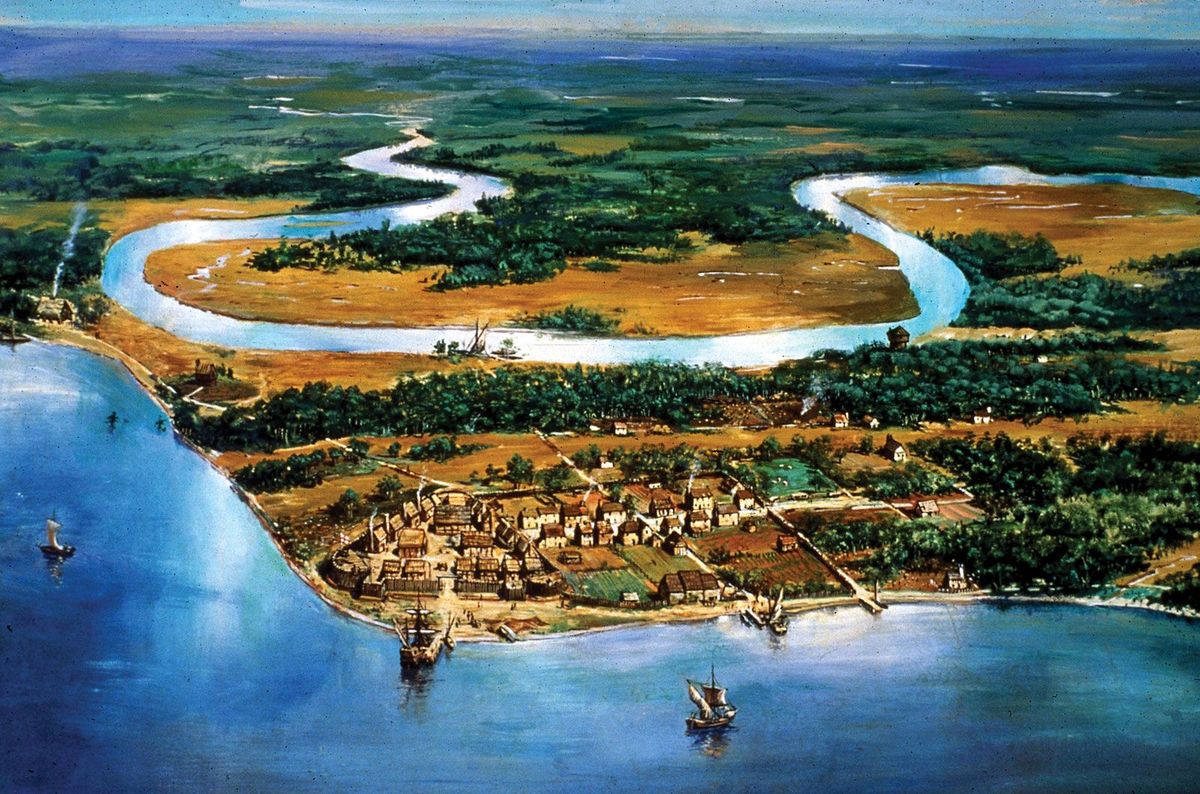Secrets Of Virginia’s Colonial Outposts

Ever wondered what life was like in Virginia's colonial outposts? These historic sites offer a glimpse into the past, showcasing the daily lives of early settlers. From Williamsburg to Jamestown, each location tells a unique story. Imagine walking through streets where colonists once traded goods, attended church, and debated independence. You can even see original buildings, artifacts, and reenactments that bring history to life. Whether you're a history buff or just curious, visiting these outposts provides a fascinating look at America's beginnings. Ready to step back in time? Let's explore the secrets of Virginia's colonial outposts together.
Discovering Virginia's Colonial Outposts
Virginia's colonial history is rich and fascinating. From bustling ports to quiet plantations, these outposts tell stories of early American life. Let's explore some of the most intriguing colonial sites in Virginia.
Jamestown: The First Permanent English Settlement
Jamestown holds a special place in American history. Established in 1607, it was the first permanent English settlement in North America. Today, visitors can walk through history and see where it all began.
Historic Jamestowne: This archaeological site offers a glimpse into the lives of the early settlers. Explore the remains of the original fort, church, and homes.
Jamestown Settlement: A living history museum with re-creations of the fort, a Powhatan village, and the three ships that brought the settlers.
Williamsburg: A Colonial Capital
Williamsburg served as the capital of the Virginia Colony from 1699 to 1780. It remains a vibrant reminder of colonial life, with restored buildings and engaging reenactments.
Colonial Williamsburg: This living history museum features restored and reconstructed buildings, costumed interpreters, and interactive exhibits.
Governor's Palace: Once the home of Virginia's royal governors, this grand building showcases colonial architecture and period furnishings.
Yorktown: The End of the Revolutionary War
Yorktown is famous for the decisive battle that ended the American Revolutionary War. But its colonial roots run deep, with many sites to explore.
Yorktown Battlefield: Walk the grounds where American and French forces secured victory over the British in 1781.
American Revolution Museum at Yorktown: This museum offers exhibits and films about the Revolutionary War and the colonial era.
Fredericksburg: A Crossroads of History
Fredericksburg played a significant role in both the colonial period and the Civil War. Its historic district is filled with well-preserved buildings and stories from the past.
Fredericksburg and Spotsylvania National Military Park: This park includes several battlefields and historic buildings from the colonial era.
Mary Washington House: The home of George Washington's mother, this house offers a look into the domestic life of the colonial gentry.
Alexandria: A Colonial Port City
Alexandria, founded in 1749, was an important port city in colonial Virginia. Its historic district is a charming mix of old and new, with cobblestone streets and waterfront views.
Gadsby's Tavern Museum: This historic tavern hosted many famous figures, including George Washington and Thomas Jefferson.
Carlyle House: Built by a wealthy merchant, this grand home offers insights into the lives of Alexandria's colonial elite.
Richmond: Virginia's Colonial Heart
Richmond became the capital of Virginia in 1780, but its colonial history dates back much further. The city's historic sites reflect its importance in early American history.
St. John's Church: Famous for Patrick Henry's "Give me liberty, or give me death!" speech, this church is a must-visit for history buffs.
Virginia State Capitol: Designed by Thomas Jefferson, this building has been the seat of Virginia's government since 1788.
Norfolk: A Naval Stronghold
Norfolk's strategic location made it a key naval base during the colonial period. Today, its historic sites offer a window into its maritime past.
Fort Norfolk: One of the last remaining forts authorized by George Washington, this site played a crucial role in the War of 1812.
Nauticus and the Battleship Wisconsin: While not colonial, this museum and battleship offer insights into Norfolk's long naval history.
Charlottesville: Jefferson's Legacy
Charlottesville is best known for Monticello, the home of Thomas Jefferson. But the area also boasts other colonial-era sites worth exploring.
Monticello: Jefferson's plantation home, a UNESCO World Heritage site, offers a deep dive into his life and legacy.
Michie Tavern: Established in 1784, this historic tavern provides a glimpse into colonial hospitality and dining.
Virginia's Colonial Legacy Lives On
Virginia's colonial outposts offer a rich tapestry of history and culture. From Williamsburg's living history museum to Jamestown's archaeological treasures, these sites provide a window into America's early days. Yorktown adds another layer with its Revolutionary War significance. Each location tells a unique story, making them must-visit destinations for history buffs and curious travelers alike.
Exploring these outposts isn't just about learning facts; it's about experiencing the past. Walking through these historic sites, you can almost hear the echoes of colonial life. Whether you're a local or a visitor, these places offer a meaningful connection to America's roots.
Plan your visit to Virginia's colonial outposts and step back in time. You'll leave with a deeper understanding of the nation's beginnings and a newfound appreciation for its enduring legacy.

